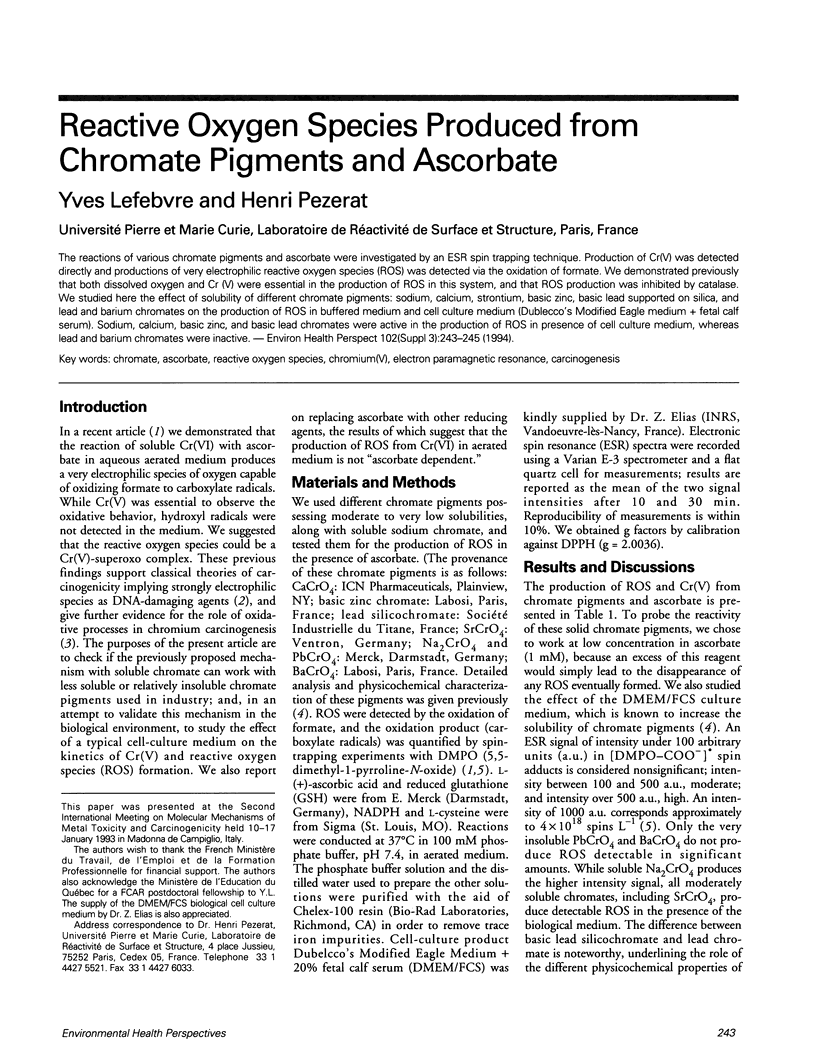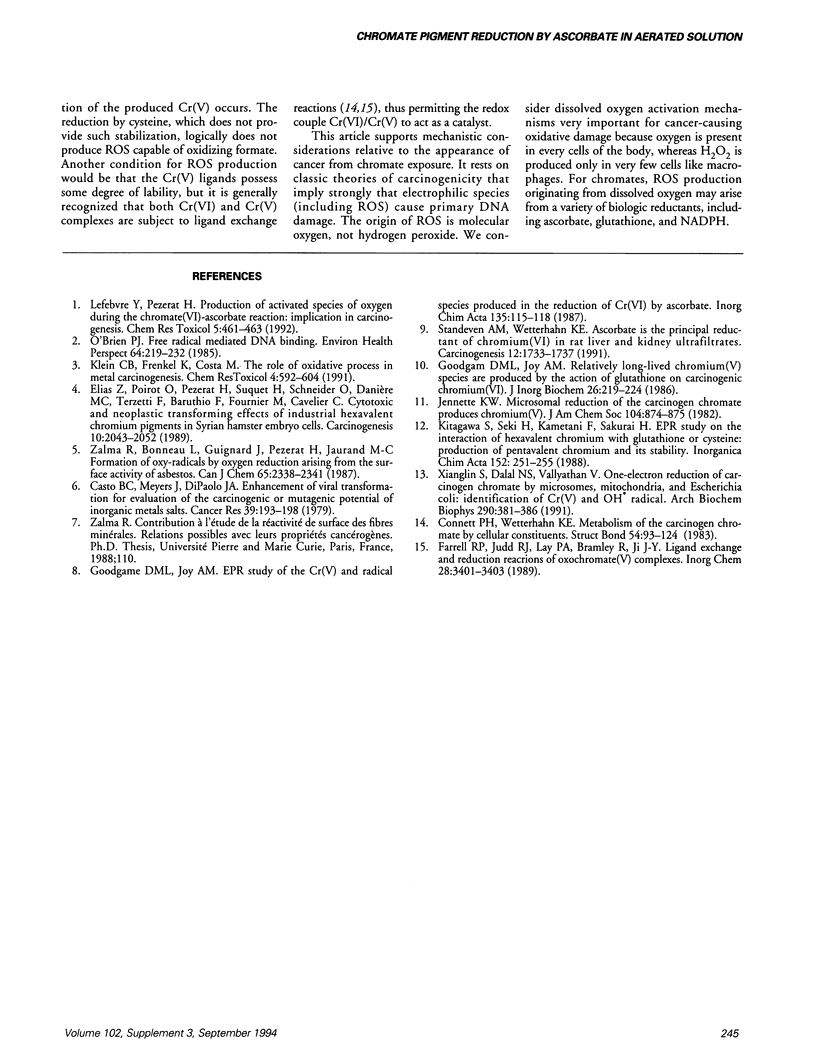Abstract
The reactions of various chromate pigments and ascorbate were investigated by an ESR spin trapping technique. Production of Cr(V) was detected directly and productions of very electrophilic reactive oxygen species (ROS) was detected via the oxidation of formate. We demonstrated previously that both dissolved oxygen and Cr (V) were essential in the production of ROS in this system, and that ROS production was inhibited by catalase. We studied here the effect of solubility of different chromate pigments: sodium, calcium, strontium, basic zinc, basic lead supported on silica, and lead and barium chromates on the production of ROS in buffered medium and cell culture medium (Dublecco's Modified Eagle medium + fetal calf serum). Sodium, calcium, basic zinc, and basic lead chromates were active in the production of ROS in presence of cell culture medium, whereas lead and barium chromates were inactive.
Full text
PDF


Selected References
These references are in PubMed. This may not be the complete list of references from this article.
- Casto B. C., Meyers J., DiPaolo J. A. Enhancement of viral transformation for evaluation of the carcinogenic or mutagenic potential of inorganic metal salts. Cancer Res. 1979 Jan;39(1):193–198. [PubMed] [Google Scholar]
- Elias Z., Poirot O., Pezerat H., Suquet H., Schneider O., Danière M. C., Terzetti F., Baruthio F., Fournier M., Cavelier C. Cytotoxic and neoplastic transforming effects of industrial hexavalent chromium pigments in Syrian hamster embryo cells. Carcinogenesis. 1989 Nov;10(11):2043–2052. doi: 10.1093/carcin/10.11.2043. [DOI] [PubMed] [Google Scholar]
- Goodgame D. M., Joy A. M. Relatively long-lived chromium(V) species are produced by the action of glutathione on carcinogenic chromium(VI). J Inorg Biochem. 1986 Mar;26(3):219–224. doi: 10.1016/0162-0134(86)80044-7. [DOI] [PubMed] [Google Scholar]
- Klein C. B., Frenkel K., Costa M. The role of oxidative processes in metal carcinogenesis. Chem Res Toxicol. 1991 Nov-Dec;4(6):592–604. doi: 10.1021/tx00024a001. [DOI] [PubMed] [Google Scholar]
- Lefebvre Y., Pézerat H. Production of activated species of oxygen during the chromate(VI)-ascorbate reaction: implication in carcinogenesis. Chem Res Toxicol. 1992 Jul-Aug;5(4):461–463. doi: 10.1021/tx00028a002. [DOI] [PubMed] [Google Scholar]
- O'Brien P. J. Free-radical-mediated DNA binding. Environ Health Perspect. 1985 Dec;64:219–232. doi: 10.1289/ehp.8564219. [DOI] [PMC free article] [PubMed] [Google Scholar]
- Shi X. L., Dalal N. S., Vallyathan V. One-electron reduction of carcinogen chromate by microsomes, mitochondria, and Escherichia coli: identification of Cr(V) and .OH radical. Arch Biochem Biophys. 1991 Nov 1;290(2):381–386. doi: 10.1016/0003-9861(91)90555-w. [DOI] [PubMed] [Google Scholar]
- Standeven A. M., Wetterhahn K. E. Ascorbate is the principal reductant of chromium (VI) in rat liver and kidney ultrafiltrates. Carcinogenesis. 1991 Sep;12(9):1733–1737. doi: 10.1093/carcin/12.9.1733. [DOI] [PubMed] [Google Scholar]


